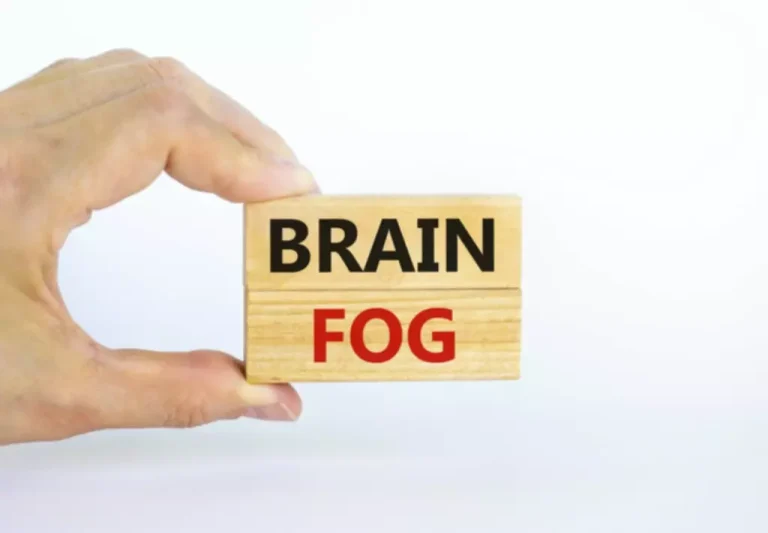
To examine in vivo signaling, Schmid et al. (2008) treated mice with either 5-HTP or DOI, and the frontal cortices were dissected 15 minutes after drug treatment, when behavioral responses were maximal. Serotonin induced ERK1/2 phosphorylation in WT mice but not in β-arrestin-2 KO mice, whereas DOI led to significant ERK1/2 activation in both genotypes. These results demonstrate that β-arrestin-2 is necessary for serotonin-induced ERK1/2 phosphorylation in the frontal cortex, but that DOI can activate ERK1/2 independent of β-arrestin.
- The information provided on this website is intended for educational purposes only and is not intended to diagnose, treat, cure, or prevent any disease.
- For decades, the media have largely portrayed psychedelics as extremely dangerous drugs; in fact, the classic serotoninergic psychedelics are generally considered very physiologically safe, certainly compared with opiates and psychostimulants.
- However, in current-clamp recordings in acute rat PFC slices, Béïque et al. (2007) noticed a subpopulation of large neurons in deep layers that was highly sensitive to 5-HT and that responded with strong membrane depolarizations capable of initiating spiking activity.
- With increasing acceptance and awareness of PAT, more people are taking an interest in the benefits offered by this approach to psychotherapy.
- They conclude that in the rat PFC, 5-HT2A receptors are expressed in pyramidal tract neurons that project to the dorsal raphe nucleus, VTA, and nucleus accumbens.
- A 2015 clinical trial evaluated the value of psilocybin in 10 participants with alcohol dependence.
XI. Use as Tools to Study Brain Function and Connectivity
Kometer et al. (2011) found that psilocybin increased reaction time, which was generally faster for Kanizsa than for non-Kanizsa figures. After psilocybin treatment, the P1 amplitude (90–144 milliseconds) was increased and was locally restricted to occipital electrode sites. Source estimation revealed activity within LOC and V2 in both hemispheres, with current source density stronger within the right-lateralized LOC and V2 in the Kanizsa compared with the non-Kanizsa condition. Psilocybin dose-dependently decreased the differential activation of the two stimulus conditions and reduced the current source density within the LOC, V2, and fusiform gyrus in both stimulus conditions.
- Slow oscillation was most robust and occurred first in or near cortical layer V, after a short delay by activity in deeper layers.
- This article will shed some light on these topics, providing more information on what PAT practices have been studied and what these treatments typically involve.
Understanding Psychedelic Addiction: A Comprehensive Guide
In addition, the investigators used transfected MEFs derived from β-arrestin-1 and β-arrestin-2-KO embryos. Culturing WT MEFs transfected with a yellow fluorescent protein (YFP) C-terminally tagged 5-HT2A receptor in complete media (containing 10% fetal bovine serum) revealed that the majority of the 5-HT2A–YFP was internalized in WT MEFs. This expression could be reversed by removing the serum from the media for a 2-hour incubation, indicating that serotonin in the media was probably causing receptor internalization.

Are Psychedelic Mushrooms Addictive?

In addition, Rabin et al. (2002) noted a lack of correlation between the behavioral potency in Alcoholics Anonymous drug substitution in rats trained to discriminate LSD or DOM from saline, and efficacy in stimulating PI hydrolysis. They concluded that 5-HT2A–mediated stimulation of PI hydrolysis did not appear to be the critical signaling mechanism involved in the discriminative stimulus effects of hallucinogens. Similarly, Roth et al. (1997a) found no significant relationship between high-affinity agonist binding and ability to stimulate PI turnover, and they proposed that additional transition states of the receptor-ligand complex must be essential for agonist efficacy. Similarly, Ballanger et al. (2010) measured 5-HT2A binding in vivo using 18Fsetoperone PET in brains of seven PD patients with visual hallucinations and seven age-matched PD patients without visual hallucinations. Patients with visual hallucinations had significantly increased 5-HT2A receptor binding in several cortical regions and one subcortical region.
- Zebrafish (Danio rerio) are emerging as a new nonmammalian organism for behavioral neuroscience research.
- Exact low-resolution brain electromagnetic tomography was applied to compute the three-dimensional intracerebral current density values of the scalp-recorded EEG rhythms.
- Genome-wide association studies plow through many thousands or hundreds of thousands of genes, searching for candidates that might be the underlying causes of affective disorders.
- Dissociative psychedelics such as ketamine and PCP create a trance-like state and feelings of detachment from reality.
- In the deep nuclei of the amygdala, the 5-HT2A receptor is expressed on both excitatory (glutamatergic) pyramidal and inhibitory (GABAergic) nonpyramidal neurons, potentially playing a crucial role in the formation of emotional memories.
Psychedelic and Hallucinogen Addiction: Symptoms, Causes, Effects and Treatment
Attempts to train animals to self-administer hallucinogens, an animal model that can predict abuse liability, have generally been unsuccessful. Bouso et al. (2012) compared 127 regular ayahuasca users with 115 actively religious controls who did not use ayahuasca. Baseline measurements were taken of general psychologic well-being, mental health, and cognition and the groups were then compared 1 year later to determine whether regular ayahuasca use had an effect on these measurements. Regular ayahuasca users showed lower scores on all psychopathology scales as assessed by the Symptom Checklist 90–Revised, as well as on measures of harm avoidance and self-directedness. Participants scored higher on a measure of psychosocial well-being and performed better on the Stroop test (an indicator of resistance to emotional interference) and the Wisconsin Card Sorting Task (a measure of working memory).
- Martí-Solano et al. (2015) compared relative signaling bias of several putative 5-HT2A agonists in both the PI hydrolysis and AA release pathways.
- It has not been widely appreciated, however, that mammalian primary visual cortex area V1, the largest known visual cortical area, expresses a high density of 5-HT2A receptors (Watakabe et al., 2009; Moreau et al., 2010).
- The therapeutic potential of psychedelics is primarily attributed to their ability to facilitate deep emotional processing, enhance the therapeutic alliance, and promote a sense of openness and acceptance.
- The investigators reasoned that if postsynaptic 5-HT2A receptor signaling induces glutamate release from presynaptic terminals, then inhibition of postsynaptic 5-HT2A signaling should also inhibit the ability of the cells to increase sEPSCs.
- Spiritual bypassing occurs when individuals use spiritual practices or beliefs, including psychedelics, to avoid dealing with unresolved emotional issues or psychological challenges.
Risks And Side Effects of Psychedelic Therapies

The significant reduction in HTR responses was consistent with the decreased density of cortical 5-HT2A receptors. After chronic treatment with MDL11939, however, a challenge dose of 0.75 mg/kg DOI gave a HTR not significantly different from vehicle-treated mice. This result was also consistent with the lack of effect of chronic MDL11939 on cortical 5-HT2A receptor density. The authors cite five earlier studies (Table 7 in Dougherty and Aloyo, 2011) that all reported similar findings, in which changes in 5-HT2A receptor density were correlated with changes in the number of HTRs.
Psychological Addiction vs. Physical Addiction #

Currently serving as the Medical Director at Valley Spring Recovery, he oversees clinical operations, editorial staff for the website and is committed to providing the highest standards of patient care. With a focus on holistic healing and evidence-based practices, Dr. Olla has become a leading figure in the field of psychiatric medicine. His dedication to patient well-being and contributions to research make him a standout authority in mental health and recovery.
In stage 2 (a second open-label administration that was offered to the initial placebo group), the clinical response rate was 100% in the seven subjects, six of whom had failed to respond to placebo and one of whom had relapsed after an initial placebo response. A decrease in Clinician-Administered PTSD Scale scores from baseline was significantly greater for the MDMA group than for the placebo group. The rate of clinical response in the active treatment groups was 85% compared with 25% in the placebo group. In addition to these reports of LSD treatment, anecdotal accounts of OCD symptom reduction by consumption of Psilocybe mushrooms have also been published (Leonard and Rapoport, 1987; Moreno and Delgado, 1997). Hanes (1996) reported on a 27-year-old male patient with body dysmorphic disorder who spent up to 4 hours every day checking his appearance in the mirror.
There is certainly a lot of potential, but many more studies are necessary to confirm the safety and benefits of using psychedelics as a medical treatment. Some psychedelics, such as LSD, can cause tolerance, which can increase the risk of an overdose and potentially cause death. Dependence refers to a physical reliance on a drug, whereas addiction refers to a behavioral change arising from a compulsion to continue taking a drug. A 2024 meta-analysis including 79 studies showed that about 15% of people who stop using antidepressants experience discontinuation symptoms. After the psychedelic drug sessions are finished, the therapist will often engage in a supportive follow-up process with are psychedelics addictive the client.
What adverse effects do hallucinogens have on health?
A small percentage of those who use hallucinogens recreationally are at risk of hallucinogen-persisting perception disorder (HPPD). This disorder can lead to individuals re-experiencing the effects of the hallucinogen that were experienced while intoxicated with the substance. HPPD can lead to visual perceptual disturbances that can last for weeks, months, or even years and significantly impact one’s life.
